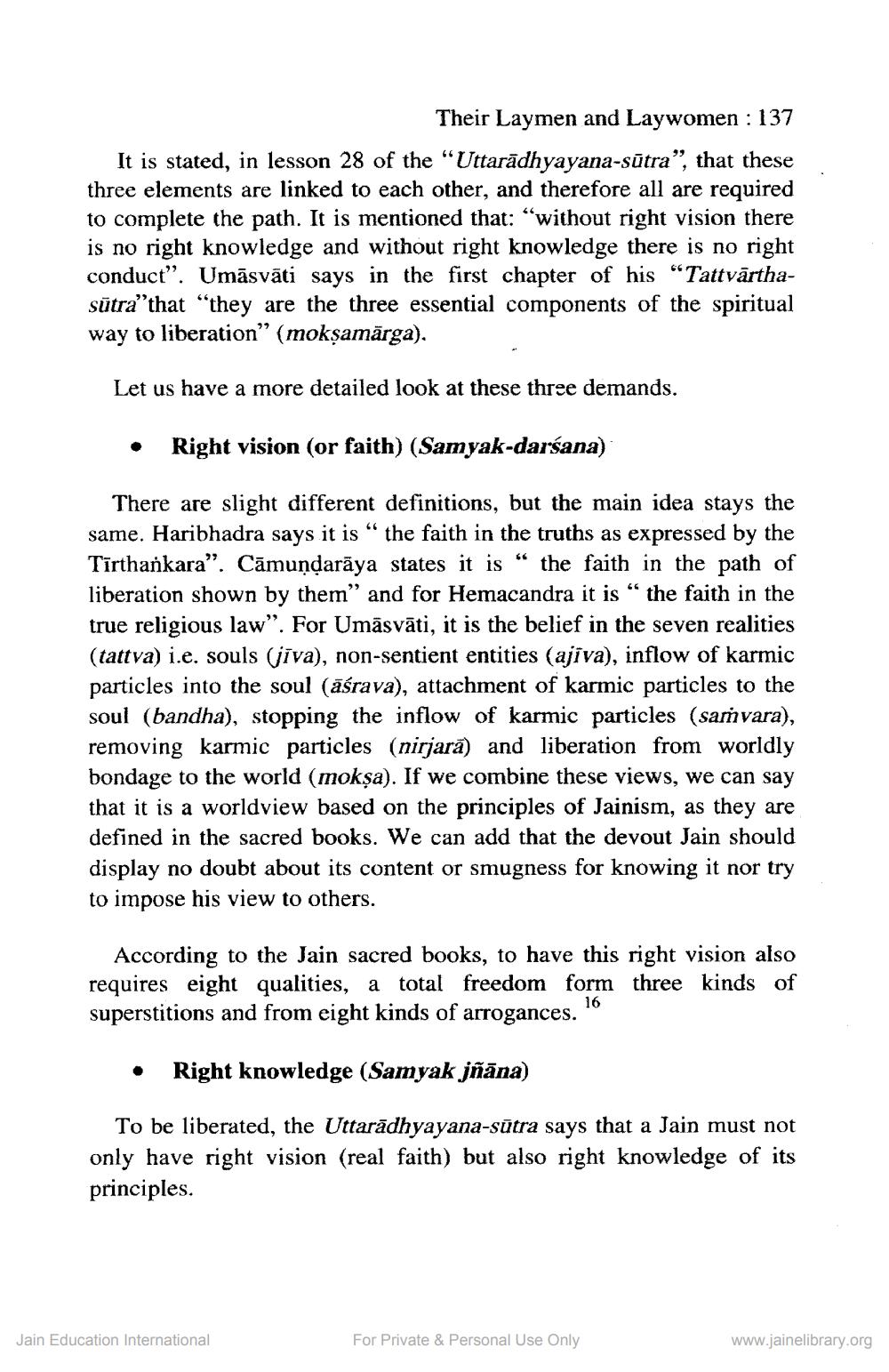________________
Their Laymen and Laywomen : 137 It is stated, in lesson 28 of the "Uttarādhyayana-sūtra", that these three elements are linked to each other, and therefore all are required to complete the path. It is mentioned that: “without right vision there is no right knowledge and without right knowledge there is no right conduct". Umāsvāti says in the first chapter of his "Tattvārthasūtra” that "they are the three essential components of the spiritual way to liberation” (mokşamärga).
Let us have a more detailed look at these three demands.
•
Right vision (or faith) (Samyak-darśana)
There are slight different definitions, but the main idea stays the same. Haribhadra says it is "the faith in the truths as expressed by the Tīrthankara". Cāmundarāya states it is “ the faith in the path of liberation shown by them” and for Hemacandra it is “the faith in the true religious law”. For Umāsvāti, it is the belief in the seven realities (tattva) i.e. souls (jīva), non-sentient entities (ajiva), inflow of karmic particles into the soul (āśrava), attachment of karmic particles to the soul (bandha), stopping the inflow of karmic particles (saṁvara), removing karmic particles (nirjara) and liberation from worldly bondage to the world (mokşa). If we combine these views, we can say that it is a worldview based on the principles of Jainism, as they are defined in the sacred books. We can add that the devout Jain should display no doubt about its content or smugness for knowing it nor try to impose his view to others.
According to the Jain sacred books, to have this right vision also requires eight qualities, a total freedom form three kinds of superstitions and from eight kinds of arrogances.'
•
Right knowledge (Samyak jñāna)
To be liberated, the Uttarādhyayana-sūtra says that a Jain must not only have right vision (real faith) but also right knowledge of its principles.
Jain Education International
For Private & Personal Use Only
www.jainelibrary.org




